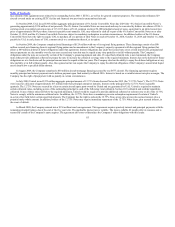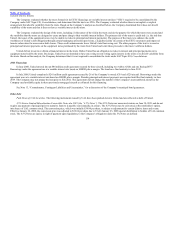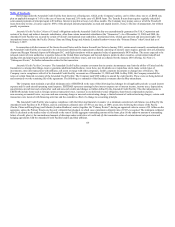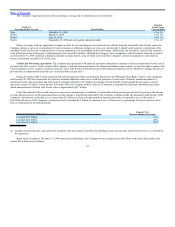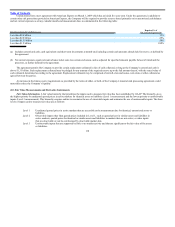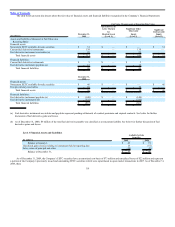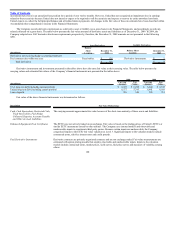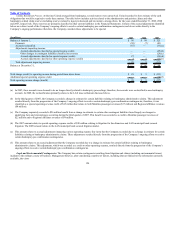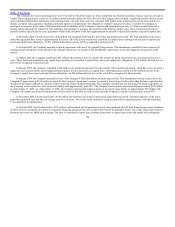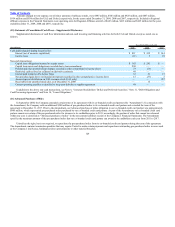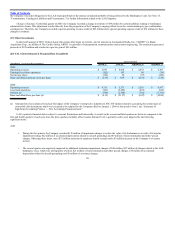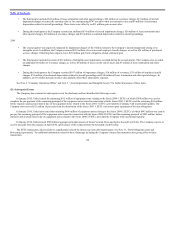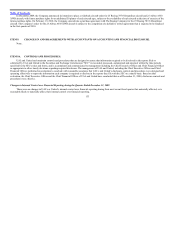United Airlines 2009 Annual Report Download - page 127
Download and view the complete annual report
Please find page 127 of the 2009 United Airlines annual report below. You can navigate through the pages in the report by either clicking on the pages listed below, or by using the keyword search tool below to find specific information within the annual report.
Table of Contents
The market approach used by the Company included prices and other relevant information generated by market transactions involving comparable assets, as well
as pricing guides and other sources. The Company considered the current market for the aircraft, the condition of the aircraft and the expected proceeds from the
sale of the assets, among other factors. The Company considers the fair value of these aircraft to be a Level 3 measurement because significant unobservable
inputs, such as aircraft conditions, were considered in the fair value measurement.
As of February 28, 2009 and June 30, 2009, the Company estimated the fair value of its tradenames using a discounted cash flow model. The key inputs to
the discounted cash flow model were the Company’s historical and estimated future revenues, an assumed royalty rate and discount rate among others. While
certain of these inputs are observable, significant judgment was required to select certain inputs from observable and unobservable market data. This fair value
measurement was considered a Level 3 measurement. The decrease in fair value of the tradename was due to lower estimated revenues resulting from the weak
economic environment and the Company’s capacity reductions, among other factors. Certain of the Company’s tradenames with a carrying amount of $570
million were written down to their fair value of $420 million as of June 30, 2009, resulting in an impairment charge of $150 million, which was included in
earnings for year ended December 31, 2009. See Note 3, “Asset Impairments and Intangible Assets,” for additional information related to these asset
impairments.
(13) Commitments, Contingent Liabilities and Uncertainties
General Guarantees and Indemnifications. In the normal course of business, the Company enters into numerous real estate leasing and aircraft financing
arrangements that have various guarantees included in the contracts. These guarantees are primarily in the form of indemnities. In both leasing and financing
transactions, the Company typically indemnifies the lessors and any tax/financing parties, against tort liabilities that arise out of the use, occupancy, operation or
maintenance of the leased premises or financed aircraft. Currently, the Company believes that any future payments required under these guarantees or
indemnities would be immaterial, as most tort liabilities and related indemnities are covered by insurance (subject to deductibles). Additionally, certain leased
premises such as fueling stations or storage facilities include indemnities of such parties for any environmental liability that may arise out of or relate to the use
of the leased premises.
Bankruptcy Considerations. The Company emerged from bankruptcy protection in 2006 pursuant to a plan of reorganization confirmed by the United
States Bankruptcy Court for the Northern District of Illinois, Eastern Division (the “Bankruptcy Court”). During the course of its Chapter 11 proceedings, the
Company successfully reached settlements with most of its creditors and resolved all claims pending in the bankruptcy case. On December 8, 2009, the
Bankruptcy Court issued a final decree closing all bankruptcy cases against the Company, effective as of that date.
The Company litigated regarding the extent to which the Los Angeles International Airport (“LAX”) municipal bond debt was entitled to secured status
under Section 506(a) of the Bankruptcy Code. In 2007, the Bankruptcy Court issued its written opinion holding that the value of the security interest was
approximately $33 million, which was affirmed by the District Court and had been accrued by the Company at December 31, 2008. On May 5, 2009, the United
States Court of Appeals for the Seventh Circuit reversed the lower courts and held that LAX bondholders were entitled to a full recovery of the principal amount
due on the bonds, approximately $60 million. In the second quarter of 2009, United recorded a charge of $27 million to increase its obligation for this matter to
$60 million. In October 2009, the Company entered into a settlement agreement with the LAX bondholders and the City of Los Angeles (“LA”) to settle the
obligation for an amount that represents the principal amount of the bonds plus some accrued interest. The settlement agreement was approved by the Bankruptcy
Court and is now considered final. In 2009, the Company also amended terms of its lease agreement with LA. The lease agreement provides that LA will pay part
of the settlement obligation on behalf of the Company and, in return, the Company’s future rent obligations were increased. As a result of this settlement
agreement and the amended lease agreement with LA, the Company reclassified a portion of the bankruptcy reserve to a rent liability which will be recognized
over the term of the revised lease agreement.
123


